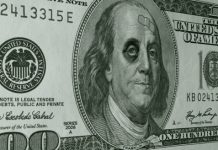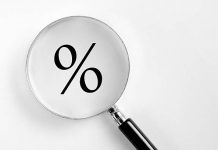Markets
An interesting Reuters article compensated for a rather uneventful trading session. Ahead of next week’s ECB meeting, the traditional “sources” article arrived. Reuters cites six people with knowledge on the matter. Diverging views on the nature of the inflation hump call for a trade-off on how to steer monetary policy during 2022. Next week’s new inflation forecasts will show a 2%+ inflation prognosis for 2022 with headline CPI thus running over 2% for at least 18 months. Those prompt a review of the current extraordinary easy monetary conditions. The ECB is amongst one of the final central banks to buck the global normalization trend for now. One thing stands out: the Pandemic Emergency Purchase Programme will end by the end of March. The key question is how the traditional Asset Purchase Programma should be deployed in order to avoid a cold turkey situation where net purchases drop from €80bn/month to €20bn/month. Options include creating a new envelope (fixed amount) to be spent over the remainder of the year. The caveat would be that it shouldn’t be used completely if not necessary. More hawkish governors probably won’t be willing to commit to purchases until the end of the year, rather preferring asset purchases to be slightly raised initially, but with the amount to be revised for example on a quarterly basis. As a quid pro quo to the doves, the remaining amount under the current €1.85tn PEPP portfolio (expected to be around €100bn) could be used as some kind of back-up in case economic or market developments warrant it. ECB governors currently agree not to drop any hints on potential rate hikes, leaving them up to come in 2023 by the earliest.
Markets didn’t react to the Reuters article. They also ignored the lowest level of US weekly jobless claims (184k) since 1969. The overall market environment is slightly risk-off. European stock markets lost part of this week’s gains, drifting around 0.5% lower. Core bonds profited from the more fragile risk environment. The US yield curve bull flattens with yields declining by 0.1 bp (2-yr) to 3 bps (10-yr). The German yield curve shifted in similar fashion with yields sliding by 1.9 bps (2-yr) to 4.1 bps (10-yr). 10-yr yield spread changes vs Germany were broadly unchanged with Greece underperforming (+4 bps). EUR/USD drifts from around 1.1350 to the low 1.13 area. EUR/GBP ran into resistance around the 0.86 big figure. News Headlines
The Chinese central bank (PBOC) raised the reserve requirement ratio of foreign currencies from 7% to 9%, according to a statement published in late Asian dealings. Doing so reduces available liquidity of the foreign currencies in scope, including the US dollar, forcing them to strengthen and the yuan to weaken. The Chinese yuan recently appreciated to the strongest level in three years, potentially hindering growth at a time the economy is already slowing down. USD/CNY closed at 6.35 yesterday. After the announcement, USD/CNY climbed to the highest level on the day at 6.374. Earlier today, the PBOC already signaled discomfort with the strong yuan, by a fixing the currency pair at a weaker than expected level.
Ukraine’s central bank raised the policy rate as expected from 8.5% to 9% today. It’s the fifth rate hike already this year. Data today showed inflation stayed in the double digits (10.3% y/y). This compares to the central bank’s 5% goal. The policy statement said the decision was aimed at fighting the impact of additional pro-inflationary risks. One of those includes a dramatic weakening of Ukrainian hryvnia last month from USD/UAH 26 to 27.4 on fears that Russia may be preparing to invade the country. The rate hike is also hoped to help prevent expectations from entrenching at too high levels. The hryvnia got some reprieve in recent days, strengthening today as well to USD/UAH 27.07. The move occurred before the central bank decision though.











